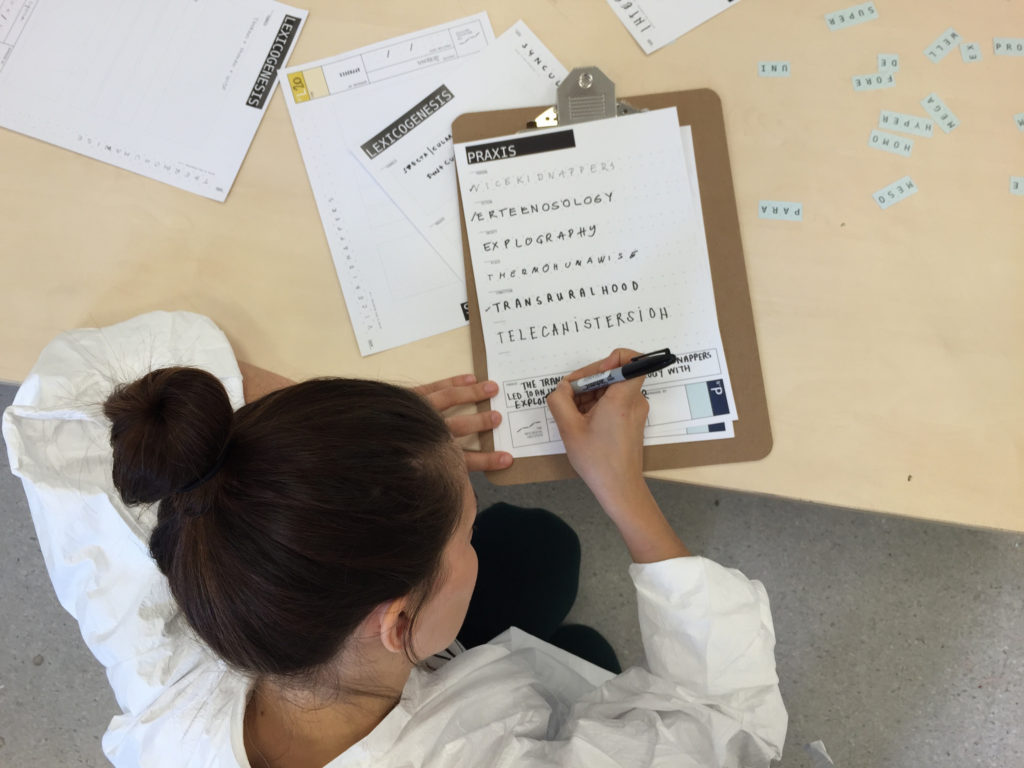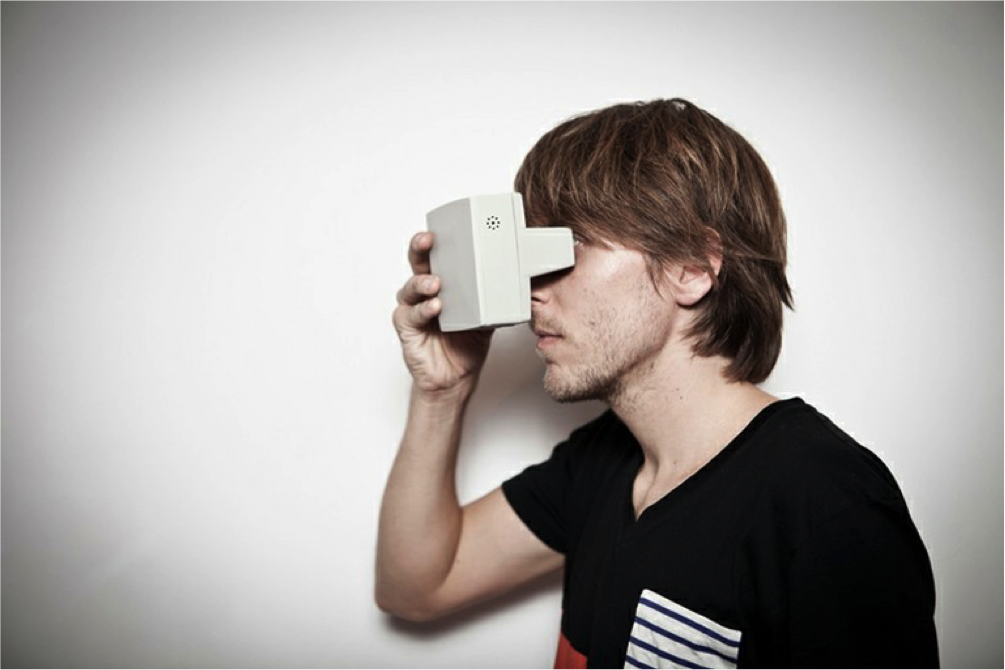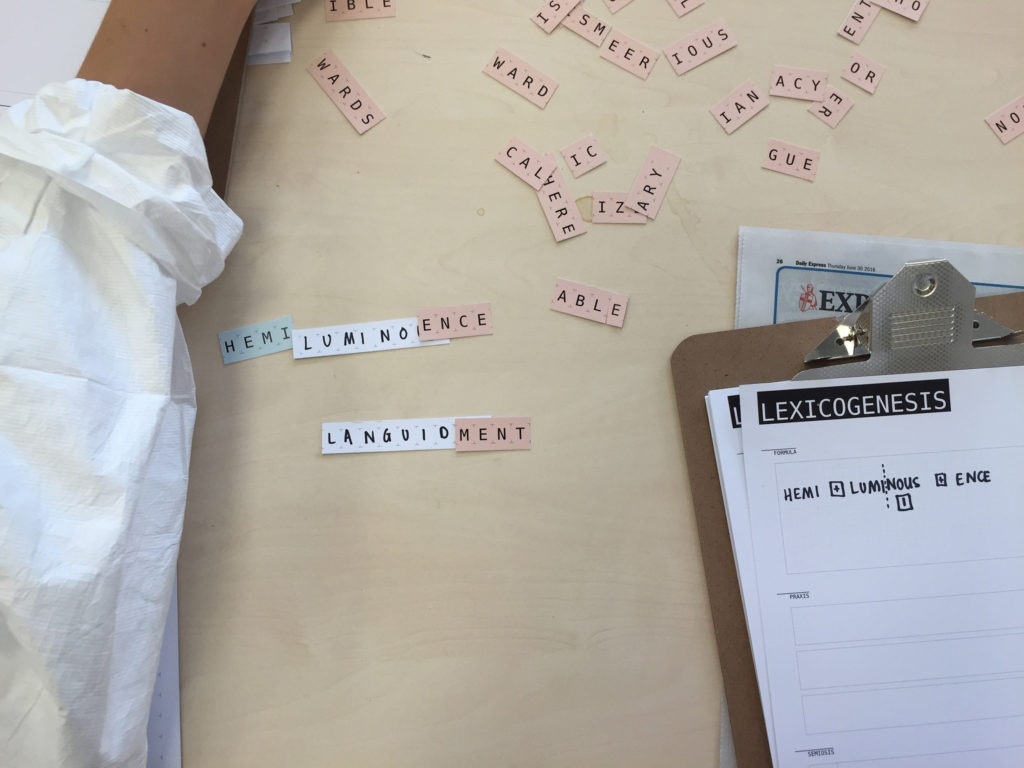Virginia Tassinari. The Wunderkammer of the Future
Philosophical Notes on the Idea of History in Speculative Design Practices
Virginia Tassinari explores how Walter Benjamin’s reflections on history can illuminate speculative design’s implicit critique of the linear understanding of history and time.
This contribution is linked to the next Desis Philosophy Talk that will be held on April 20th in Milan during the 2018 Design Week, at Z33’s space. In the panel, different speakers will discuss the topic of wunderkammers, collecting and storytelling in relation to non-linear time.

‘Notre heritage n’est précédé d’aucun testament.’ —René Char
‘The natural prayer of the soul (is): attentiveness’ —Walter Benjamin
There are many contemporary philosophers who may inspire and shape the discourse on how speculative design practices can disrupt the idea that our future will be a natural extension of our present and our past. The German philosopher Walter Benjamin characterized our contemporary perception of time, as a linear idea of history, running from the past towards the future, motivated by the idea of “progress”. Benjamin not only criticizes this narrow and erroneous understanding of history but also suggests an alternative made possible by this critique.
In this article, we will illustrate how his reflections on history can illuminate speculative design’s implicit critique of the linear understanding of history and time. By examining this issue through the lens of Benjamin’s philosophy, we will explore the implications of speculative design practices — such as those developed by Jon Stam and by Pantopicon that are discussed in this article — on our perception of time and history.
Beyond linear temporality
Benjamin speaks of modernity as the time of “shocks” (1) — interruptions in the continuity of our perception of the present — that question and challenge the linear idea of history. For instance, the introduction of the telephone and of the camera, according to Benjamin, changed the sensorium of the modern man. He believes that the idea of linear history — which he describes as a “continuum” (2) of past, present and future — is mystifying because it is unjust, since it looks at the past only from the viewpoint of the winners, without acknowledging the point of view of the losers of history — for instance, the victims of WWII. It is so over-reductive that it does not allow one to consider the past in all its complexity.
Such a vision justifies past events of history, even the most unjust ones, by ascribing the character of necessity of what has already happened. This totalitarian vision of history suggests that history is a slow but inescapable road to progress, motivated by the irrational belief that the future will be better than the past and that humankind is fully developing its potential through the course of history. In this vision, the future is the natural consequence of the way in which we currently consider our past, and the present is a necessary consequence of the past. Linear history is therefore condemned to perpetuate and inevitably repeat that which has already happened — in short, nothing really “new” can possibly happen.

Yet with WWII this vision started to crumble. The catastrophic character of Benjamin’s era proved this faith in the future to be unfounded. The devastation of war could by no means be considered to be a positive development in history, shattering the illusion of progress.
In other words, Benjamin’s disillusionment led him to question the concept of our future as a prolongation of the past. His scholar and friend Hannah Arendt speaks of this experience of loss of confidence in the linear idea of history by borrowing an image of Franz Kafka: a character is trapped in a tunnel, in which he can no longer recognise the end or the beginning (3). This is also a metaphor of our contemporaneity: we are trapped in the “now” and paralysed by the fear of the future. The idea of history we inherited from our past has been revealed to be an illusion. Therefore, it can no longer guide us to look towards the future. In “dark times” (4), where the traditional linear reading of history has ceased to help us to interpret the world around us, both Arendt and Benjamin see the possibility to look at history in a different way. Arendt says that this ‘odd in-between period’ or gap in history … may contain the moment of truth’ (5) and provide us access to other understandings of temporality. The perception of a “gap” in our understanding of history is a phenomenon that can take place throughout all historical periods: ‘(T)his small non-time-space in time’ (6) is the door through which other understandings of temporality are made possible. Any generation is invited to discover it.
Awakening in a new light of potentialities
This gap in our perception of linear history is, for Arendt, the only possible space to develop ‘the activity of thought’ (8), which allows us to look at the past with eyes “undistracted” (9) by tradition. Seeing the past outside of a unilateral reading — which oversimplifies it and therefore impoverishes it — makes it possible to acknowledge not only the past but also the present and the future in all their multifaceted complexity. It is through the destruction of the linear idea of history that “new beginnings” (10) — the “infinite improbability that occurs regularly” (11) — can finally occur.
Benjamin says that each “moment of danger” (12) ‘releases the enormous energy of history that lies bonded in the “Once upon a time” of classical historical narrative’ (13). It can be considered a ‘constellation of awakening’ (14), that allows modernity to wake up from the dream into which it has fallen.
He wants to show that in what has passed unnoticed — regarded of too little importance and significance in the eyes of linear history — there is hope to show the past (and therefore also the present and the future) beyond the conventions of linear time.
These residual images (what he also calls “dialectical images” (15), reveal a short-circuit between past, present and future; the time of the “now” — which he calls the Jetztzeit (16) — is the moment of sudden interruption of the continuum of history in which the past’s unexpressed potentialities are revealed as being meaningful for the present and future times, “profanely illuminating” (17) them by means of a new light. In the “now”, these dialectical images show a “constellation” (18) of potential re-weavings of past, present and future. Thus, history can finally reveal its true face, beyond its linear interpretation: propelled not by necessity — the compulsion to follow the paths we recognise in the linear reading of the past — but rather by freedom.
Catalysts of rupture
Benjamin believes that in order to unravel the manipulative, illusory character of linear history, we need to be able to recognise a possibility for the present and future in those aspects of reality that have not been acknowledged in the past, because considered marginal or useless from the point of view of progress. I believe that this operation is also recognisable in contemporary design practice, especially in speculative design. For example, Jon Stam turned his “attentive” eye (19) to the residual elements of an archaeology of knowledge — such as stereoscopic visors, Wunderkammern, commonplace books, etc. — and captures their unexpressed potentialities to unravel their value for our present and future. By identifying technological instruments that have lost their value in the eye of linear history, these residual images can help us to broaden our imaginations and step beyond a logic based on the linear idea of time, in which these artefacts have become totally useless. In his work ‘A Cabinet of Wonders/ A Commonplace Book’, he makes uses of a forgotten technique for collecting information, known as commonplace books, to create an installation, which combines a curiosity cabinet with a plotting device that prints fragments of ideas of temporality alternative to the linear one. Useless, meaningless residual elements from the past become building blocks to construct a critique of linear time and to acknowledge in this rupture the possibility for alternatives.

Referring to Dunne and Raby, this kind of design confronting us with a “what if?” question, has come to be known as “speculative design” (20). It can show us what the future might look like if it would be shaped along alternative paths than the ones suggested by a linear reading of history, or what the past and present might have looked like if other paths would have been followed. Speculative design challenges the status quo, questioning the idea that the future will be a mere projection and extension of the present.
The Neological Institute
This was the aim in the performance ‘The Neological Institute’ by foresight and design studio Pantopicon, to which I contributed with co-organiser Nik Baerten. The performance is set in a parallel potential present that could have developed if other choices would have been undertaken in the past, in which participants perform the role of employees on their first day at work in a (fictional) research institute called the Neological Institute. In a society in which many are aware that keywords used in everyday language have become overloaded with past meanings — driving us to repeat the mistakes of the past and narrow our vision of the future — employees are asked to deconstruct these presently “polluted” words and create new words, thereby also opening up people’s imagination towards potential futures. New words are created to inspire new worlds. The participants of the first enactment of this performance, which took place during the Design Research Conference 2016 in Brighton (UK), experienced a “shock” in the perception of their present — a displacement, meaning not just a critique of the present, but also allowing to imagine possible futures besides the logic in which we currently live.

Speculation as a catalyst for real change
In the aforementioned examples, speculative design strives to create gaps in time, “shocks” of the perception of our idea of temporality, derailing the inevitability of linear history. By opening possibilities on alternative pasts, presents and futures, designers question the idea of the future as mere continuations of our traditional, linear interpretations of the past and present. By suggesting alternatives by means of their “what if?”, they generate a rupture in the linear idea of history. In Benjamin’s words, they create a “shock” in our perception of the present. Reading these experiments through Benjamin’s eyes allows us to reflect on the empowering value of these “shocks”. The “what if?” can do much more than just develop a critique on our perception of temporality: It can open up our imagination so that we can think new possibilities, allowing us to frame how something radically “new” could happen in our present time.
In other words, speculative design has not only a disruptive function but also an enabling one, as it can inspire and enable radical social, technological, symbolic, and even political innovation. It can, therefore, be considered as more than a shock to our perception of history, for the sake of criticising the “now”. If one follows Benjamin’s reasoning, these shocks can be considered to be tools for “new beginnings”. This also means that speculative design is not only meant to be enjoyed in museums and exhibitions, but rather also situated in a real-life context since that is where it can express its productive potential in a more powerful way. Real, concrete contexts make it possible to imagine what the unexpressed potentialities might be and how they can be translated concretely into transformative actions to be undertaken in the now within a given specific context.
(Re)training the eye
By creating “shocks » that question the idea of the future as a prolongation of our linear reading of the present — and, retrospectively, the past — speculative design can train our eyes to become more attentive to capturing what has become useless or meaningless, the possibility to reveal its unexpressed potentialities and create an unforeseen, unexpected value. Once this trained eye captures the not-yet of the past, the totalitarian pretensions of the inevitability of what already happened may yield to radically “new”, unexpected possibilities. Speculative design can inspire “shocks” that have the ability to estrange us from our linear perception of time and train an “attentive” eye — one that is able to look at the past, present and future — to acknowledge potentialities that otherwise would pass unseen. Thus, we can look at the past & present (and therefore also at the future) in a richer way, by taking into consideration multiple perspectives, including the ones currently regarded as marginal.
Speculative designers need to train their eyes to recognise these residual elements that can be used as building blocks for constructing alternative narratives embedded with a “what if?”. In doing so, they can also help others to train this eye, and start to recognise the potentialities of reality that risk remaining unexpressed through the lens of linear history.
Footnotes
1 W.Benjamin in Benjamin and Tiedemann 1999, P.325
2 W.Benjamin in Benjamin et al.2003, P.396
3 H. Arendt in Arendt and Kohn 2006, P.9
4 H.Arendt 1970
5 H. Arendt in Arendt and Kohn 2006, P.9
6 Ibidem, P.13
7 H.Arendt 1970
8 H. Arendt in Arendt and Kohn 2006, P.13
9 H. Arendt in Arendt and Kohn 2006, P.28
10 H.Arendt 1998
11 Ibidem, P. 266
12 W.Benjamin in Benjamin et al. 2005 P.458
13 W.Benjamin 1968, P.255
14 W.Benjamin quoted in Smith 1989, P.51
15 W. Benjamin in Benjamin and Tiedemann 1999, P.40
16 W.Benjamin quoted in Agamben and Minervini 2013, P.40
17 W.Benjamin, “Surrealism: The Last Snapshot of the European Intelligentsia”, in Bronner and Kellner 1989, P.174
18 W.Benjamin in Benjamin et al. 2003, P.396
20 Dunne, T., Raby, F. 2013. Speculative Everything: Design Fiction and Social Dreaming. MIT Press